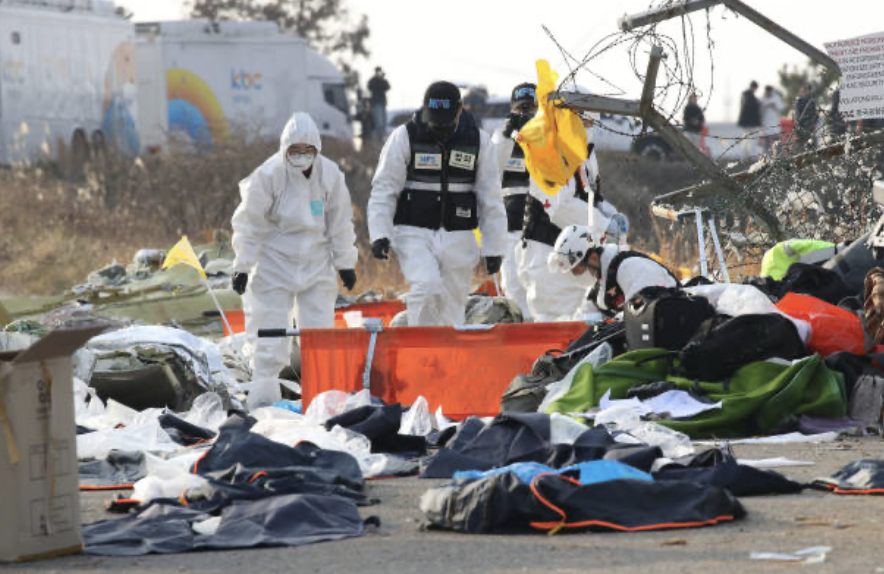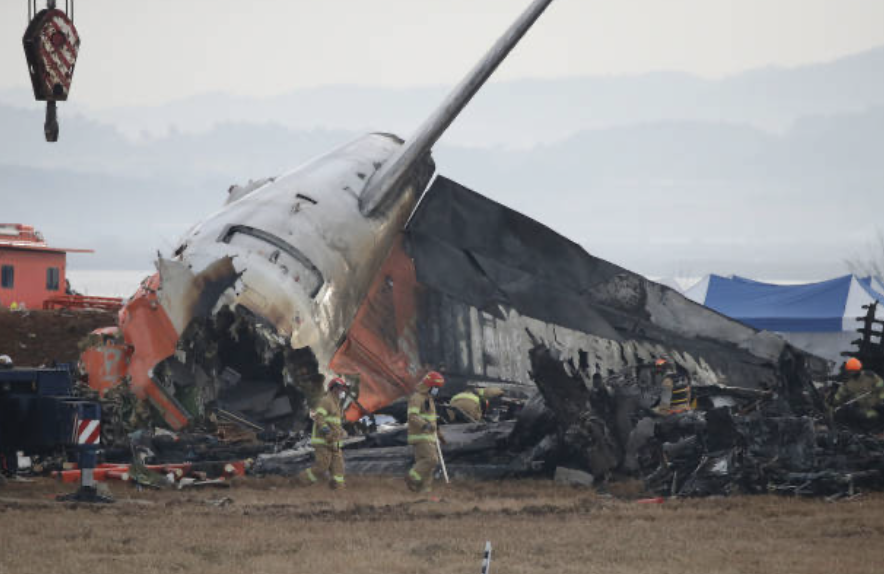The Jeju Air plane, which was on a domestic flight from Seoul to Muan, crashed due to difficult weather conditions, including strong gusts of wind and reduced visibility. After several attempts to land, the aircraft struck a concrete wall before bursting into flames, causing a devastating explosion. Images of the incident, widely reported by the media, showed scenes of chaos and terror, with the aircraft in flames in the airport area.
The accident made headlines around the world, particularly as it involved a Boeing 737-800, a model widely used globally. This type of aircraft is renowned for its safety, which makes this accident all the more shocking. The human toll was tragic, with 179 people killed and only two survivors, crew members, one of whom is in a serious condition.
The first investigations
Initial investigations by the South Korean police and aviation authorities immediately focused on a number of factors. These included the weather conditions, as well as the aircraft’s maintenance and turnaround management practices. The Boeing 737-800 had made 13 flights in the 48 hours before the incident, raising questions about the frequency of its use and the rigour of its technical checks.
At the same time, searches were carried out at Jeju Air’s offices and at Muan airport. Those are part of a wider investigation into whether negligence may have played a role in the tragedy. Police are particularly interested in how aircraft maintenance was managed and whether technical failures were at the root of the crash. Inspectors have also seized documents and records relating to safety management, technical checks on the aircraft and emergency protocols followed in the final hours before the accident.
The authorities specified that this investigation could also concern the management of operations at Muan airport, where the plane eventually crashed. If failures in landing procedures or poor coordination with the control tower are proven, they could weigh heavily in the explanation of the accident.
Finally, it could also have been a collision with birds, which could have caused an engine to stop. According to a video that has been widely circulated on the internet, a spark can be seen on the right wing.

The outcome of the black boxes: initial answers
The aircraft’s black boxes have been recovered and analysed. Initial data show that the pilots had difficulty controlling the aircraft in the minutes before impact. The landing system, brakes and landing gear appear to have malfunctioned, although the authorities have refrained from jumping to conclusions.
However, it is worth noting that the Boeing 737-800 has faced controversy. Similar incidents have occurred in the past, but none resulted in such a high loss of life. Inspections of this aircraft fleet in the region are now a key focus. South Korean aviation authorities have ordered rigorous checks, particularly on the landing gear, to determine if technical faults caused the crash.
The actions taken by authorities and airlines
The recent crash in South Korea has raised serious concerns about air safety. It has drawn attention to the safety practices not just in South Korea, but across Asia. Until now, South Korean airlines, including Jeju Air, had a relatively good safety record. They had avoided major accidents. This tragedy has shaken that reputation and calls for a major reassessment of how fleets are managed.
The crash is pushing experts and regulators to demand a thorough review of safety protocols. They stress the need to examine all factors to prevent similar incidents in the future. The investigation will focus on human error, technical issues, and environmental conditions.
Raids on Jeju Air and Muan airport are part of the broader inquiry into safety practices. These actions may lead to significant changes in how aviation safety is managed in South Korea. The findings of the investigation could result in new standards and more transparency. This could reshape how air incidents are handled in the future, ensuring a higher level of safety.
A shock for the country and the airline industry
South Korea, once known for its air safety, is now facing uncertainty. The nation is in shock, with many questions about the aircraft’s reliability and safety systems. This accident marks a turning point in the country’s aviation history and has global implications as the industry seeks ways to prevent such tragedies.
The coming months will be critical in uncovering the cause of the crash and reassessing safety standards. The victims’ families seek answers, while South Korean authorities vow to ensure transparency and reform to uphold aviation safety in the future.










